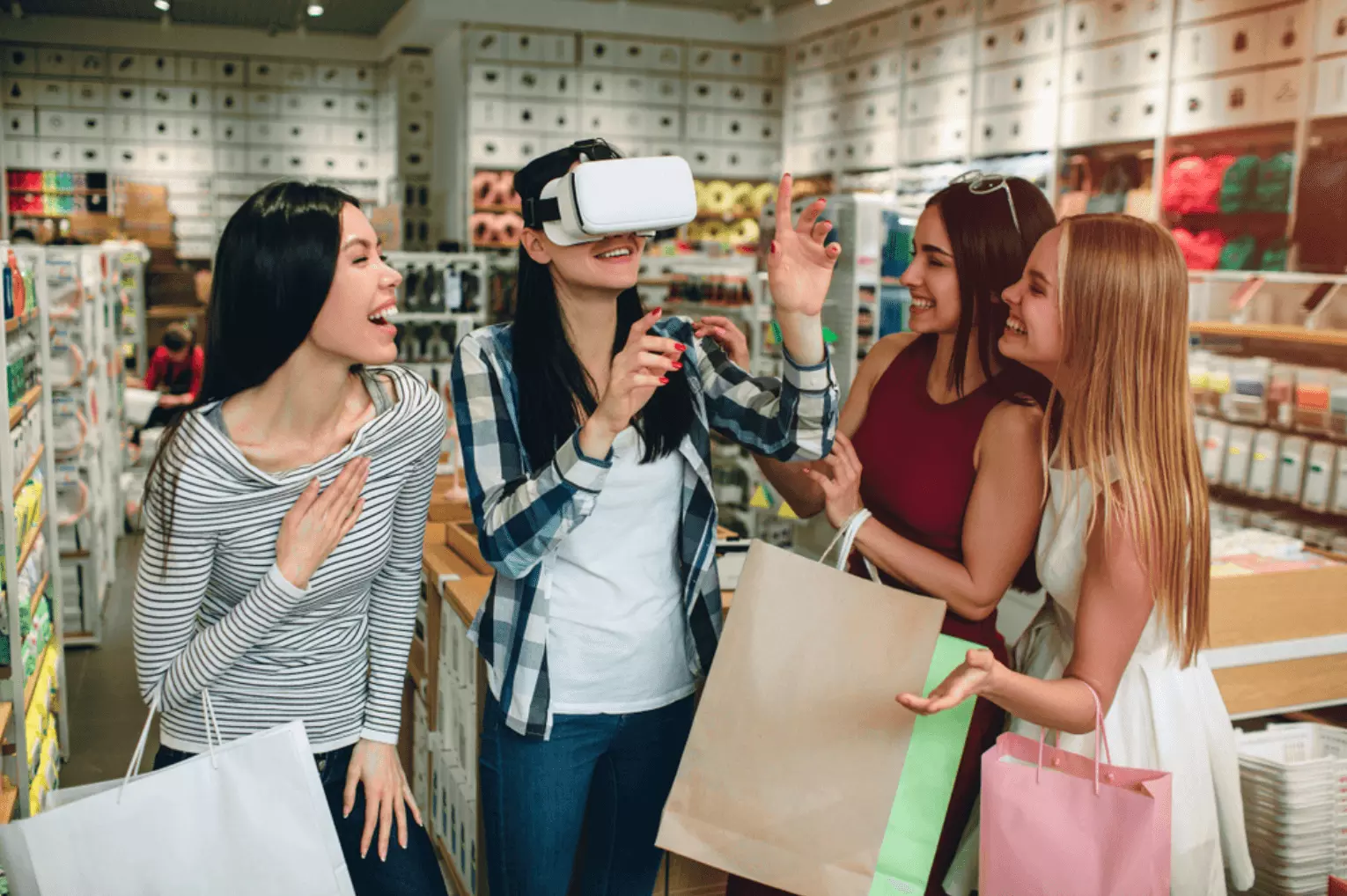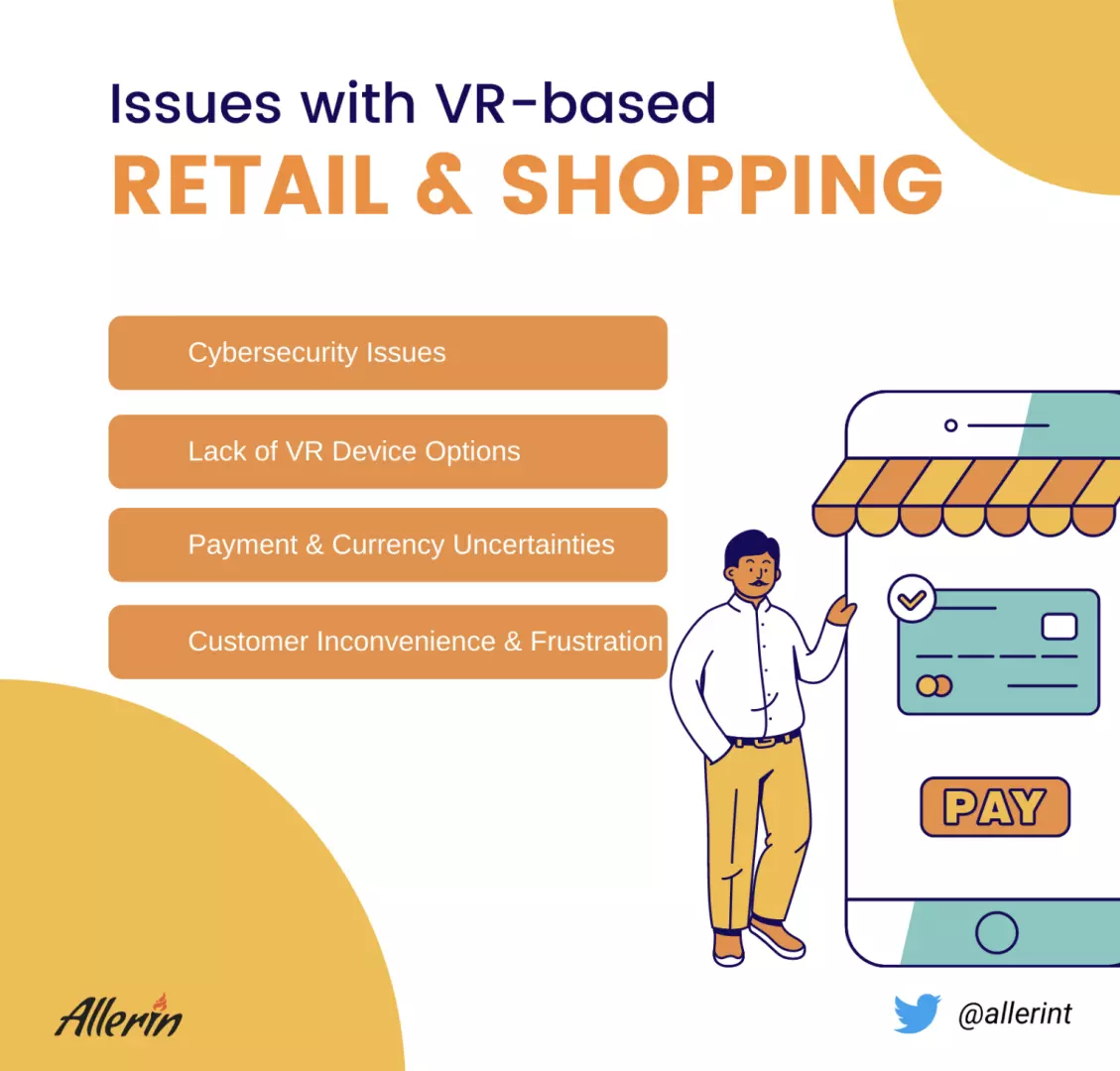Comments
- No comments found

Out of all the enthralling possibilities associated with the metaverse, the idea of a VR retail store is the least enticing.
The incorporation of VR in retail-based shopping needs to overcome several hurdles before it can be accepted by vendors and consumers.
In 2017, Walmart premiered a video to demonstrate its vision of a VR-based shopping zone for e-commerce buyers. It had everything one would expect—360-degree virtual levels filled with groceries and electronics, an AI shopping assistant and animated payment counters. At the time, the retail giant had described the project as “reimagining the shopping experience for customers.” Recently, with the metaverse concept gaining popularity, the video resurfaced online. Unsurprisingly, it was universally panned by netizens. The obvious issue with a VR-enabled retail store was that it eliminated the convenience factor associated with one-click purchases made from e-commerce websites. Why would someone wear a heavy VR headset and wave their limbs mid-air while navigating through a virtual maze when they can simply make a purchase in less than a minute on Amazon?
Solutions to certain problems need to be found if the implementation of VR in retail has to be a success. Some of those issues are:

As you know, current e-commerce vendors offer a wide variety of payment options to buyers. This allows consumers to draw their savings or credit from a multitude of sources. However, the narrative seems to be very muddled when you talk about payments and currencies used in the metaverse. While some believe that NFTs and cryptocurrencies will be the norm in the virtual ecosystem, there are others who feel that standard digital payments currently being used over the internet will find their way into the virtual zone too. This is bound to create confusion for consumers, many of whom are not completely familiar with bitcoins and other types of cryptocurrencies.
VR-based shopping makes location redundant. So, the concept of currencies and exchange rates are also a point of contention for VR in retail. Bringing in a uniform currency in VR shopping is essential. Also, the metaverse will need to establish proper protocols for payment verification protocols as well as virtual currencies apart from cryptocurrencies for seamless transactions in multiple ways. Creating a standardized currency in the metaverse should be expected to take time. What's more, convincing users used to standard money and transactions to try out new and untested virtual methods will also be a challenge that needs resolution.
The internet, as you know it, is already full of constantly new and evolving cyber-threats such as viruses, malware, and data breaches, among a host of other attacks. With VR in retail and the metaverse, users will be jumping right "into the internet." Technologies such as AR and VR are expected to play a big part in this new internet. So, what kind of cybersecurity issues and data loss avenues can users expect there?
VR headsets cover the eyes completely and, to an extent, the head of a headphone wearer. So, basically, what a user in VR sees is entirely simulation. If a hacker remotely accesses a VR shopper's headset, they can show them dizzying series of images and motion pictures. This may cause disorientation, headaches, nausea and a host of mental illnesses in viewers. Alternatively, the entire landscape of how places and VR in retail stores would appear is not clearly known. Will VR shopping centers be a replica of their real-world counterparts? If so, can hackers manipulate users into believing that they’re currently in one virtual store and not another? So, the possibility of manipulation remains high when you talk about VR in retail operations.
There are much more serious cybersecurity issues that can affect users of VR in retail stores and operations. Users entering the metaverse are expected to use hand and finger gestures to authorize transactions while they make purchases from virtual stores. Like normal e-commerce payment portals, virtual ones will also save important data from users, such as gestures, pin codes, eye-tracking details and biometric data such as fingerprints and retinal data, to make their experience convenient. So, if this data is accessed illegally, users could lose money as well as their all-important authorization data used for conducting transactions. To resolve this problem, governments around the world and metaverse administrators can include hand gestures and eye-tracking information as personal identification information that must have the same level of confidentiality as ATM pin codes and other bank details possess currently. Apart from the breach of payment-related information, ransomware and malware can also threaten to steal personal information such as a person’s SSN and similar other details. The violation of such sensitive information will make the inclusion of VR in retail repulsive for many.
One of the biggest “new” cyber-threats in the metaverse is deepfakes. Deepfakes, as you know, involve fake videos and imagery created by superimposing a given face or body of an entity on another to create an almost-real motion picture. For example, there is a deepfake of Tom Cruise. AI, VR, machine learning and computer vision are used in the creation of deepfakes. Deepfakes can be used to create imposters of a given digital avatar of a person—a person’s digital representation when they’re in a simulation. With deepfakes, identity theft in the metaverse is possible. In a convoluted way, that may lead to retail shopping being carried out under one person’s identity without their knowledge.
Retail stores prefer having omnipresence—a presence on online and offline platforms—in today's day and age. This translates into retailers having brick-and-mortar stores as well as a website for online orders and delivery tracking for consumers. The involvement of VR in retail unnecessarily complicates things. As stated at the beginning, users have found comfort in the fact that they do not have to physically go to shops because of e-commerce. At the same time, certain users are drawn towards the concept of brick-and-mortar stores for periodic shopping.
A VR-based retail store, then, feels like a representation of the worst of both worlds. VR shoppers will need to physically move their limbs around in their living room with their headsets on to traverse the corridors of a virtual shopping mall. This defeats the purpose of e-commerce entirely and makes shopping feel like a chore again. On the other hand, users will not get to hold and feel the quality of products such as fruits and vegetables in their hands as they're only virtually present in a mall. On top of that, an AI-based assistant/ghost following you around, like the one seen in Walmart’s VR experience video, while you try to shop in peace and solitude can get on some nerves. Shopping online was invented for shoppers to sidestep exactly such interactions.
This seems to be more of an ideological and inconvenience problem than something that is genuinely loss-making for users. However, until this dichotomy of VR-based stores is addressed, not many users would want to give virtual shopping a second try.
VR tech is surprisingly rare in terms of producers. There are only a handful of VR devices, such as the HTC Vive, Oculus VR headsets, Sony PlayStation VR, amongst a few others, that enable users to enter into a metaverse-like simulation. Currently, gaming, film viewing and other forms of entertainment are the only present applications of such devices. For VR-based shopping to become the norm, users will need to find VR devices within their affordability first. Virtual infrastructure building is an entirely different problem that will need to be dealt with later.
This is similar to the dearth of smartphones and computers when e-commerce first emerged in the public consciousness. When the internet and e-commerce first gained popularity, there were concerns about its viability not much different from the ones listed here. However, with time, investments, vision and advancement in technology, such limitations were overcome and e-commerce companies, such as Amazon, have gone on to become some of the biggest brands in the world. Similarly, the advent of VR in retail shopping may seem to be riddled with problems right now. At the same time, such problems also seem resolvable over the next decade or so. Once that happens, the influx of VR in retail promises to have tantalizing possibilities that will change the way you shop all over again.
Naveen is the Founder and CEO of Allerin, a software solutions provider that delivers innovative and agile solutions that enable to automate, inspire and impress. He is a seasoned professional with more than 20 years of experience, with extensive experience in customizing open source products for cost optimizations of large scale IT deployment. He is currently working on Internet of Things solutions with Big Data Analytics. Naveen completed his programming qualifications in various Indian institutes.
Leave your comments
Post comment as a guest